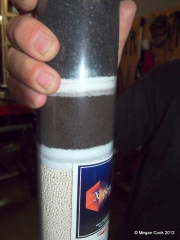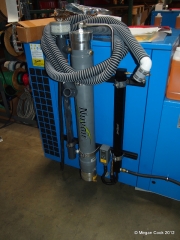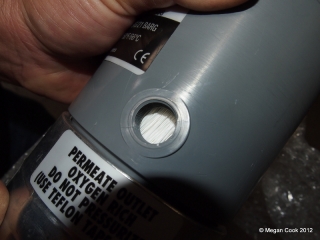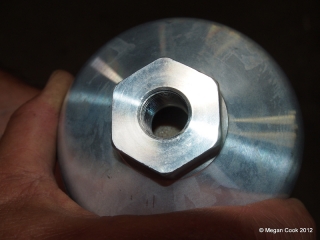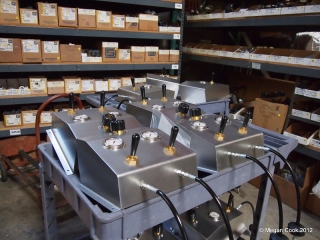Hey readers- Megan here- checking in from the scholar road!
I’ve spent years breathing compressed gas without ever fully understanding all that it takes to get that air jammed into a small bottle. During my visit to Southern California I stopped in at Nuvair compressors, one of the world’s leading manufacturers of air compressors, to learn a little more.
The original product that made Nuvair famous was a self-contained filtration system that takes normal ambient air and creates nitrox. Nitrox is air with higher than normal oxygen percentage and divers use it to extend the amount of time they can stay at depth. Normal air is around 21% oxygen, 79% nitrogen and 1% other stuff. Nuvair earned their place in the market with compressor called ‘Nitrox in a box’.
Nitrox in a box!
Here’s how it works:
Outside air is pulled through a filter which takes out water vapor (white desiccant layer), carbon monoxide (the brown layer is hopcolite which converts CO ? CO2) and oils (black layer is activated carbon, a ‘sweetener’ which removes any tastes).
Air is then pulled through a hollow membrane tube. Inside many membranes are packed like long, hollow uncooked spaghetti noodles.
Filtered air flows through the tube past all these noodles. Nitrogen is a smaller molecule than oxygen and will diffuse into these tubes and get trapped.
The air around the tubes now has less nitrogen and effectively a higher percentage of oxygen– voila nitrox! This new gas is pumped out of the membrane tube and into a storage tank ready for a scuba fill.
Nuvair like many companies has diversified as the market has changed in the last few years. It’s obviously working; shipments were heading all across the country as well as England, Japan and Australia on my visit day alone. I had never thought about all the businesses needing compressed gas. Nuvair builds commercial diving equipment, military systems, natural gas compressors, personal compressors for yachts, gas analyzers and, most surprising, paintball compressors. Three to five fields a week around the world either open for business or retool their fill banks. That’s a whole bunch of paintball welts thanks to the awesome compressors built in Oxnard, California.
Nuvair even built a filtration system to change the oxygen percentage inside an entire Australian football (soccer for my US readers) practice facility. The team can simulate training at altitude now by pumping down the oxygen availability. A huge network of sensors around the field regulate when the pumps turn on and off. Oxygen masks are standing by for when/if players collapse.
Trace chemicals in air get especially dangerous when they get compressed and inhaled at depth; it’s incredibly important to able to monitor your gas supply easily. Nuvair builds a whole line of gas analyzers, but I was most impressed with their new 4-in-1 monitoring system for commercial diving. On a single panel a tender can watch the oxygen, carbon dioxide, carbon monoxide and water vapor levels being delivered below the surface. The board is wired with limit alarms and is a simple step to limit diver risk under the surface.
The founders of Nuvair were all watermen and divers with a mechanical inclination. Nuvair manufacturers all their equipment in house from sensor assembly to custom metal work on fill cages. They’re extremely proud of being a home-grown US company with almost thirty employees. I was very glad to learn about a part of the scuba industry so far removed from normal dive skills. It’s great to see all the different roles in this industry needed to keep pushing technology and the sport forward.

